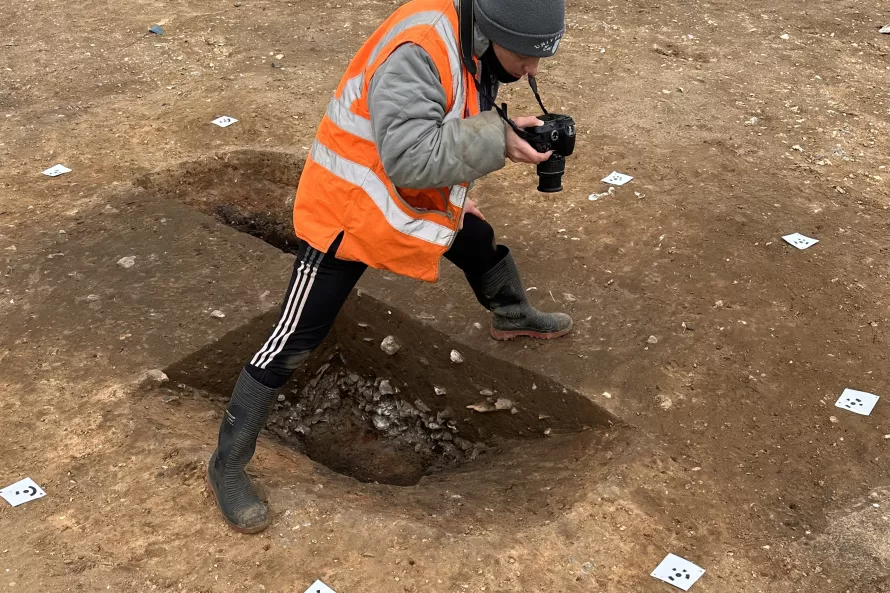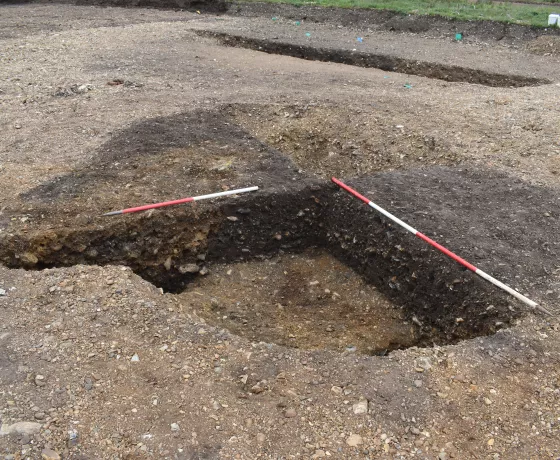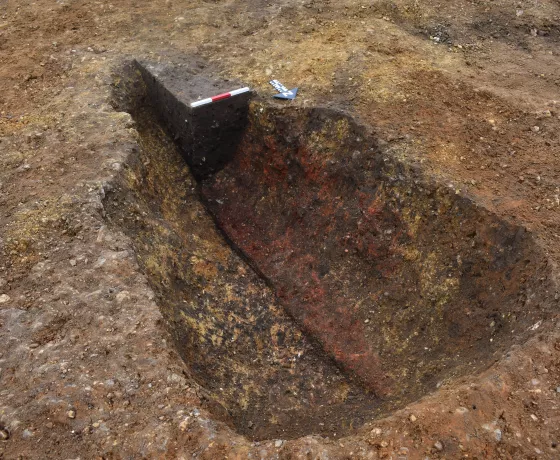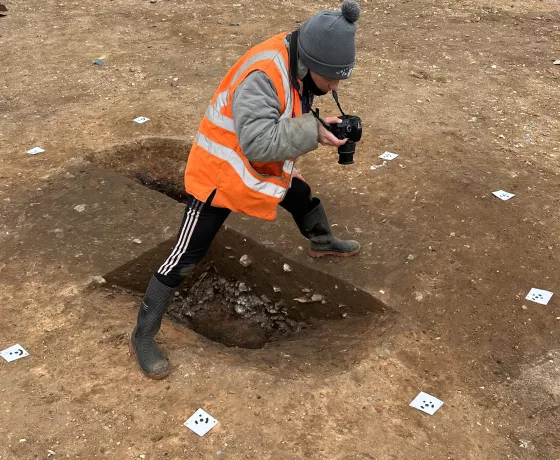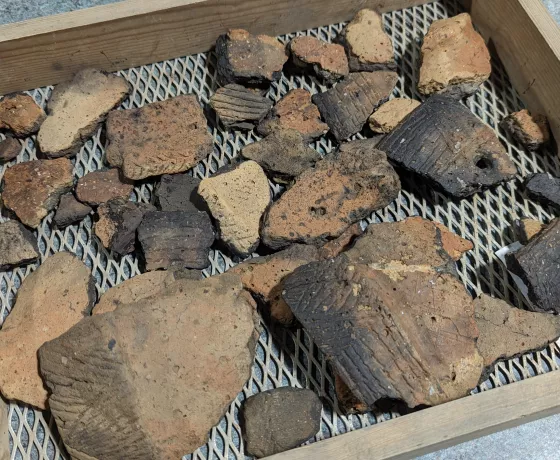To give you a feel of what it's really like to be an archaeologist, we asked two of our team members, Laura and Will, to do a takeover of the blog and write a piece each about what they get up to on site. Today is Laura’s turn to give us an insight into her daily life. Check back in next week to see what Will gets up to each day at work.
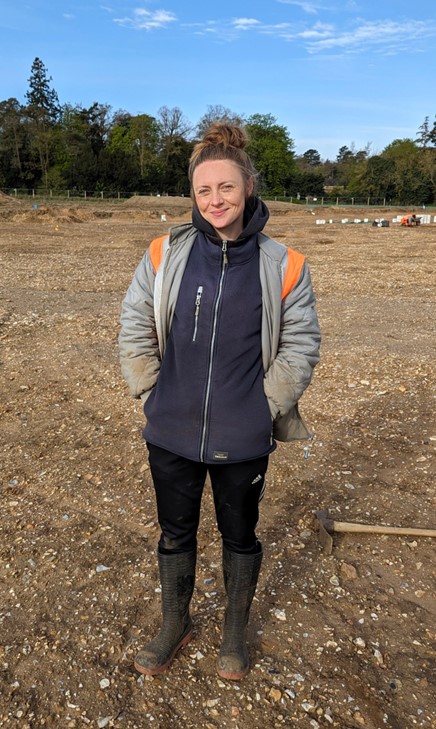
Laura on site.
“I arrive at the office at 7am, ready to be transported to our site near Bury St Edmunds. We are excavating large areas to the southeast of the historic market town, which has provided evidence of human occupation from the Mesolithic to modern times. We begin the long march to site from the compound at 8am. I am currently excavating an enormous fire pit dating to the Anglo-Saxon period, which has generated much attention and excitement. It’s the only fire pit we have found thus far at Abbot’s Vale, and I feel really lucky to have the chance to excavate and record it!
The pit is large, rectangular, and packed with heat-affected flint. It also has evidence of in-situ burning. Similar pits discovered at other sites in Suffolk have provided valuable evidence about how it was used. It’s believed a fire was lit at the base of the pit and flint nodules were placed onto a wooden platform above. As the fire intensified, the wood and flint collapsed, eliminating the oxygen and extinguishing the flames. This left behind a bed of hot rocks used to cook food. The large amounts of animal bone found in the uppermost fill of the pit suggest its use was possibly reserved for large gatherings and feasts.
In the morning, I continue to clean the fire pit and begin the recording process. In addition to photographing the feature, I also complete context sheets which provide more specific information about some of the fills and finds it includes.
When first break is over, I start the process of photogrammetry. This method has become commonplace in modern archaeology and involves capturing hundreds of images of a feature from different angles. The images are then integrated into a digital software programme to create a three-dimensional model. This allows specialists, as well as the general public, to get closer to the archaeology. You can see my handiwork below.”
"In the afternoon, I bag up and label some of the finds from the pit. As well as large quantities of animal bone, I also found a few sherds of decorated pot. Overall, stamps and bosses were the predominant form of decoration during this period, and I begin to wonder who added the fine details to this particular pot.
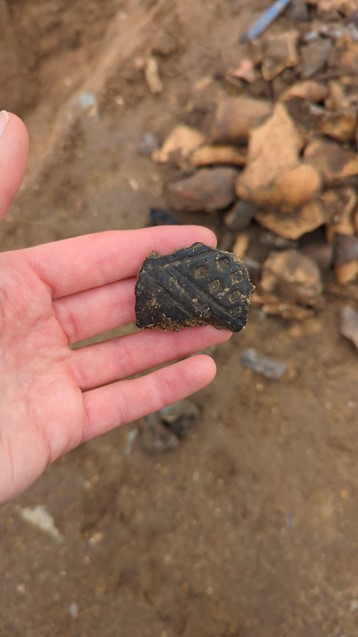
A photo of the sherd of decorated pot.
Abbot’s Vale has already yielded some fantastic features and finds, and sites such as this one remind me why I fell in love with the subject in the first place. I can't wait to see what amazing discoveries will come next! "
Other posts in this collection
Read our latest posts about the investigations at Abbot's Vale.

